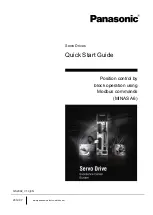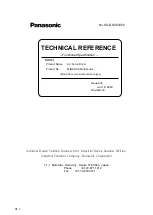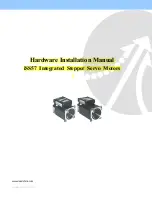
2-26
Note
1. The (W) Matsushita models are UL and CSA certified.
Note
2. Refer to manufacturers documentation for operating details.
Note
3. The surge immunity is for a standard impulse current of 8/20
µ
s. If pulses are wide, either decrease the
current or change to a larger-capacity surge absorber.
Note
4. The energy resistance is the value for 2 ms. It may not be possible to retard high-energy pulses at less
than 700 V. In that case, absorb surges with an insulated transformer or reactor.
D
Noise Filters for Power Supply Input
Use a noise filter to attenuate extraneous noise and to diminish noise radiation from the Servo Driver.
Select a noise filter with a load current of at least twice the rated current. The following table shows noise
filters that reduce by 40 dB noise between 200 kHz and 30 MHz.
Maker
Model
Rated current
Remarks
Tokin
LF-210N
10 A
For single-phase
LF-215N
15 A
g
LF-220N
20 A
To attenuate noise at frequencies of 200 kH or less, use an insulated transformer and a noise filter. For
high frequencies of 30 MHz or more, use a ferrite core and a high-frequency noise filter with a through-
type capacitor.
D
Noise Filters for Motor Output
Use noise filters without built-in capacitors on the Servomotor output lines. Output lines cannot use the
same noise filters as the power supply. General-purpose noise filters are made for a power supply fre-
quency of 50/60 Hz; if they are connected to an output of 7.8 to 11 kHz (the Servo Driver PWM frequen-
cy), an extremely large leakage current (approx. 100 times normal) will flow to the capacitor in the noise
filter. The following table shows the noise filters that are recommended for motor output.
Maker
Model
Rated
current
Remarks
Tokin
LF-310KA
10 A
Three-phase block noise filter
LF-320KA
20 A
ESD-R-47B
---
EMI core for radiation noise
Fuji Electrochemical Co.
RN80UD
---
10-turn for radiation noise
Note 1. The Servomotor output lines cannot use the same noise filters used for power supplies.
Note 2. Typical noise filters are used with power supply frequencies of 50/60 Hz. If these noise filters
are connected to outputs of 7.8 to 11 KHz (the Servo Driver’s PWM frequency), a very large
(about 100 times larger) leakage current will flow through the noise filter’s condenser and the
Servo Driver could be damaged.
System Design and Installation
Chapter 2
Artisan Technology Group - Quality Instrumentation ... Guaranteed | (888) 88-SOURCE | www.artisantg.com
















































